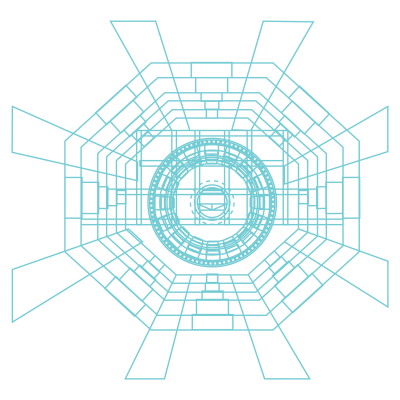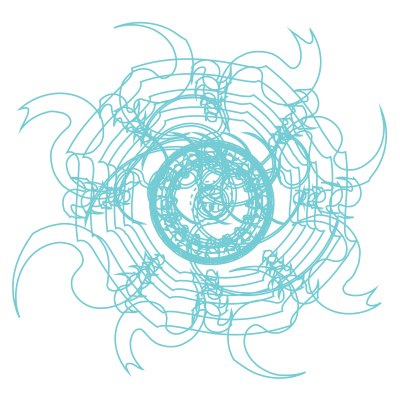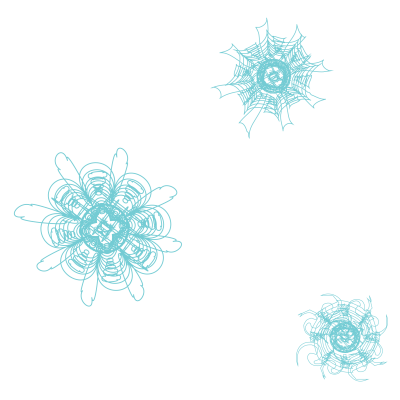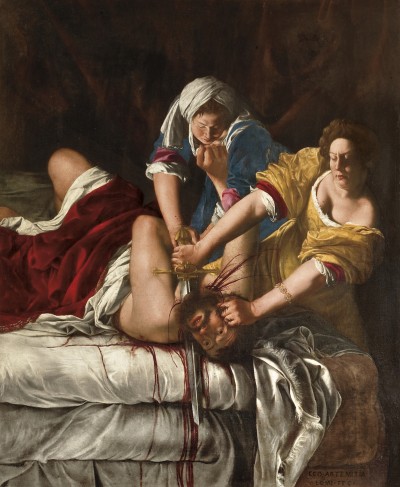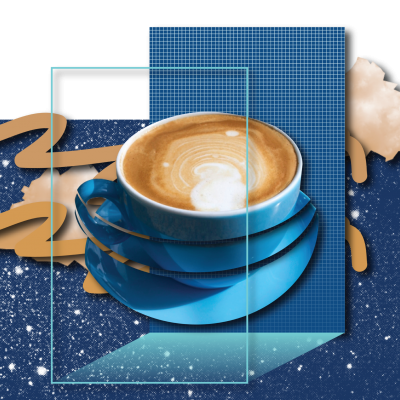The Artist Residency at the World’s Largest Particle Accelerator
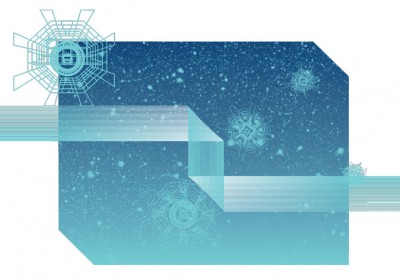
Artists and theoretical physicists both create “the conditions for the unexpected to happen,” according to Ariane Koek. She came to Chicago to speak as part of the Conversations on Art and Science Events Series at the invitation of School of the Art Institute of Chicago (SAIC) President Walter Massey. The two met at The Salzberg Global Forum, an international independent think tank for cultural policy-makers based in Austria. Koek was co-presenting on “imagination” with Charles Elachi, director of the jet propulsion lab at NASA. She has a history of working with imaginative thinkers across disciplines.
At SAIC, Koek discussed her work on establishing an artist residency at The European Center for Nuclear Research (CERN) in 2011. The science institute, founded in 1954, involves thousands of scientists around the world in fundamental research on the structure of the universe. They invented the World Wide Web, a component of the Internet, to handle its vast flow of information. Koek’s qualifications for this role stems from years with the BBC producing programs on science in collaboration with artists and directing the creative writing based residency, Arvon Foundation. In 2009, with the help of the Clore Fellowship, she began researching the possibilities of a peer-reviewed artist residency within the world’s largest scientific research network. CERN has been a draw to amateur and established artists alike for decades, with visitors like Björk and Cerith Wyn Evans making visits to inspire new works; but there had never been an official program for collaboration between artists and scientists. In addition to curating individual visits through Arts@CERN, Koek also founded a juried residency with a fully funded open call for two international artists per year.
Collide@CERN sets up artists with “inspiration partners,” research scientists based in CERN’s Geneva Headquarters. The artists are given an office similar to the scientists to research amongst the physicists, without pressure to produce anything. One strand of Collide@CERN is open to international artists who live or were born in Geneva, and partners with the City and Canton of Geneva, to offer artists space to work at the center for three months. The other strand, open to international artists anywhere, partners with Ars Electronica to offer artists a space at CERN for two months, followed by a month at Ars Electronica’s Linz-based Futurelab. The residency is built on the precept “that particle physics and the arts are inextricably linked: both are ways to explore our existence –— what it is to be human and our place in the universe,” says Koek. Without the obligation to produce, artists, like the scientists who develop pure knowledge-based experiments at CERN, are free to explore possibilities outside of applied research. Koek asserts Collide@CERN aims to provide “a period of research and development, food for the soul, two to three months for you to regrow.”
The Large Hadron Collider (LHC) at CERN sends 11,000 protons per second rushing around a 25-kilometer track at 99.9999991% the speed of light. Last year, protons collided in the centre of the ATLAS detector and the CMS detector, giant particle detectors that capture images of the nearly invisible, by visualizing data.When the protons crashed into each other, the detectors recorded the elusive and quickly decaying Higgs Boson; the particle posited as creating symmetries and asymmetries in electromagnetic fields. Essentially, the Higgs Boson is considered as the causal root of all mass in matter.
Some artists have responded to their experiences at CERN by creating new technologies themselves or exploring the idiosyncrasies of the universe. Wolfgang Tillmans was inspired to consider developing a new camera after his visit as part of Arts@CERN to ATLAS. Composer Mark Bowden and librettist Owen Sheers reinterpreted Hayden’s The Creation, taking direct inspiration from CERN’s Alice experiment, which investigates the quark-gluon plasma that emerged just as the universe was forming, following an Arts@CERN experience. Inaugural Collide@CERN resident Julius von Bismarck claims he has ideas for the “next thirty years.” During his residency he created an installation with four swinging lamps rotating in randomized disharmony except for one anomalous turn when the lamps synchronize their orbits. This summer sound artist Bill Fontana, who came to SAIC in 2011 as a visiting professor, turned the entire collider into a resonator, as it has been shut down for renovation. He played the sounds of the sea through exciters attached to the sides of the Large Hadron Collider. The sounds completed the 27km circuit 12.2 seconds later, filtered by their journey through the LHC’s materials. Choreographer Gilles Jobin, the first Geneva-based Collide@CERN artist, created a number of improbable interventions. In one work, the dancers sidle on their bellies along the ledge of the library windows. Documentation shows concentrated physicists, buried in reading, oblivious to the movement of physical bodies.
Koek warned that one of the dangers for artists and anyone visiting CERN is that “they become so close to particle physics, because it’s so imaginative and abstract and it’s so engaged with the questions you ask yourself everyday, like who am I, what am I, and what is my place in the universe. … Once you get too close to the actual language of physics, you can lose your soul, just because it’s so fascinating, and you want to prove yourself. And yet, it will take you 15 years to be a particle physicist, just as it’s taken you many years of dedicated time to be an artist.” The questions that teams of scientists at CERN investigate do not come quick and easy. CERN is a place of concentration and dedication, and it can be tempting for a visitor to succumb to its deep universal allure. This is one of the reasons the residency is three months, and not longer.
In quantum physics, demonstrated in Young’s double-slit experiment, one’s own perception of an event is recognized as fundamentally changing it. As much as the artists are interacting with the research of the scientists, “anecdotally, all of the scientists have said that ‘it has changed the way we look at our science,’” says Koek, “It has changed the way we practice our science, but I can’t tell you how. … its going to change the way I do my science, but I can’t tell you how. I just know it’s changed me fundamentally.”



